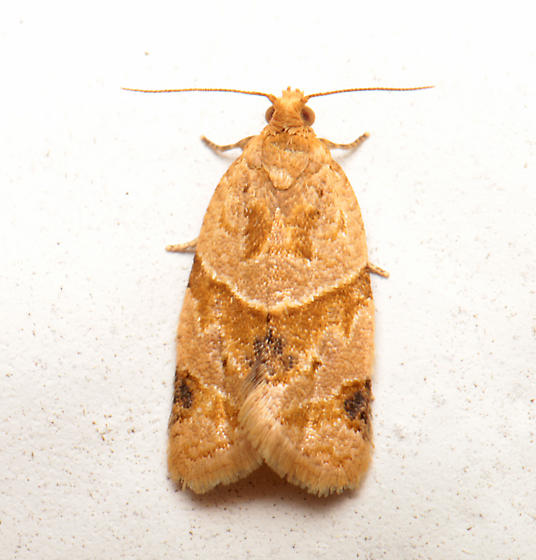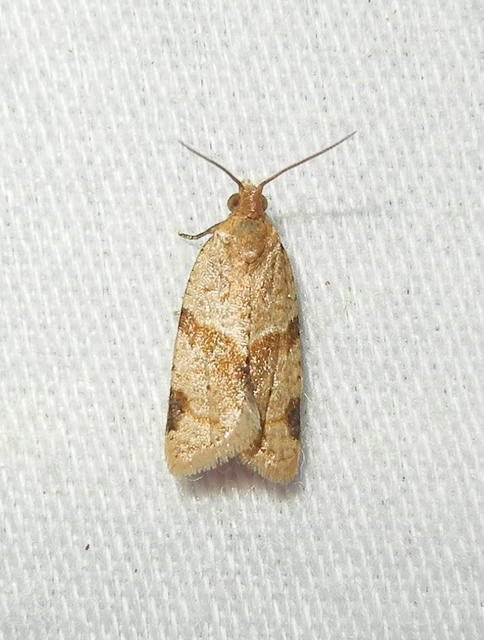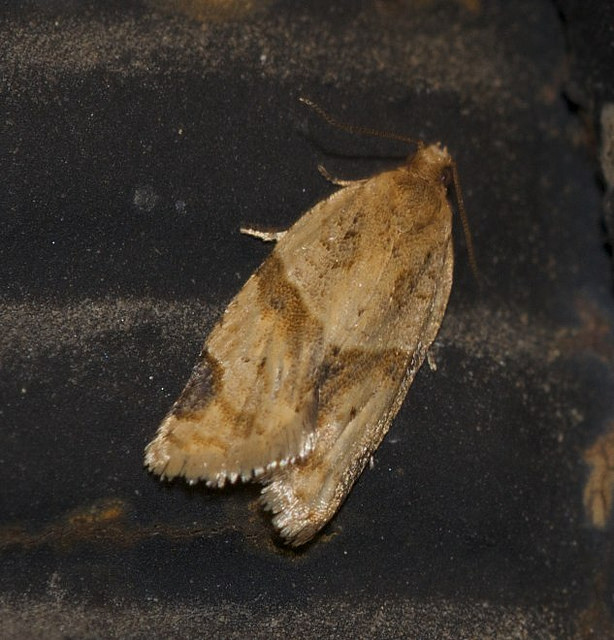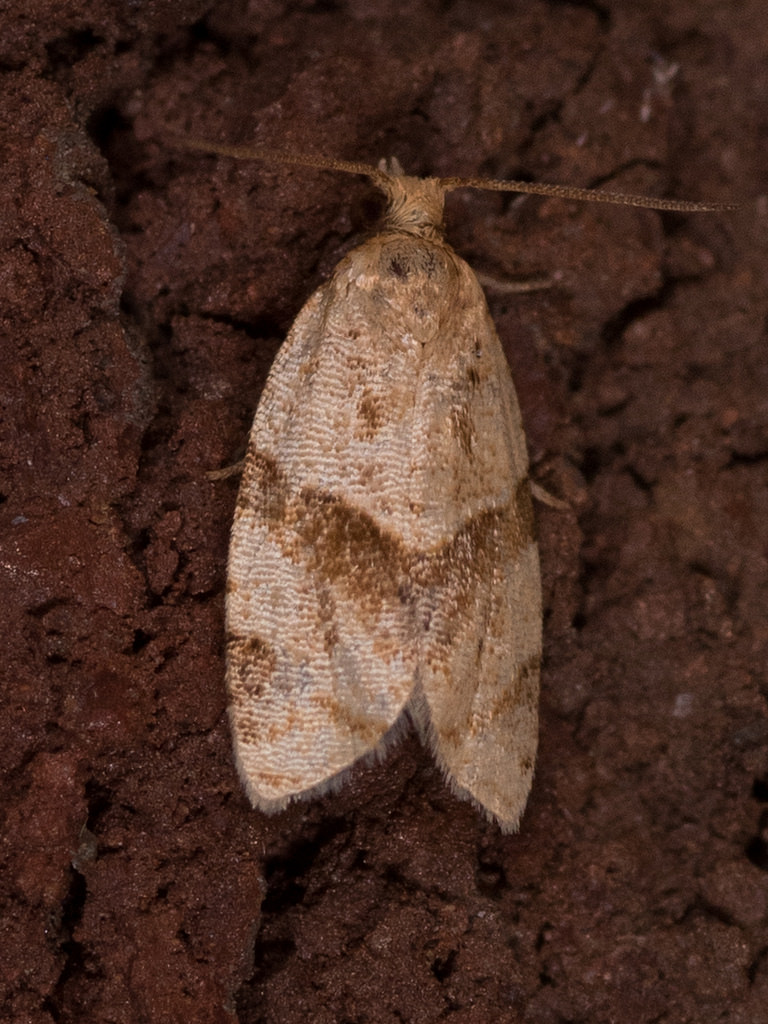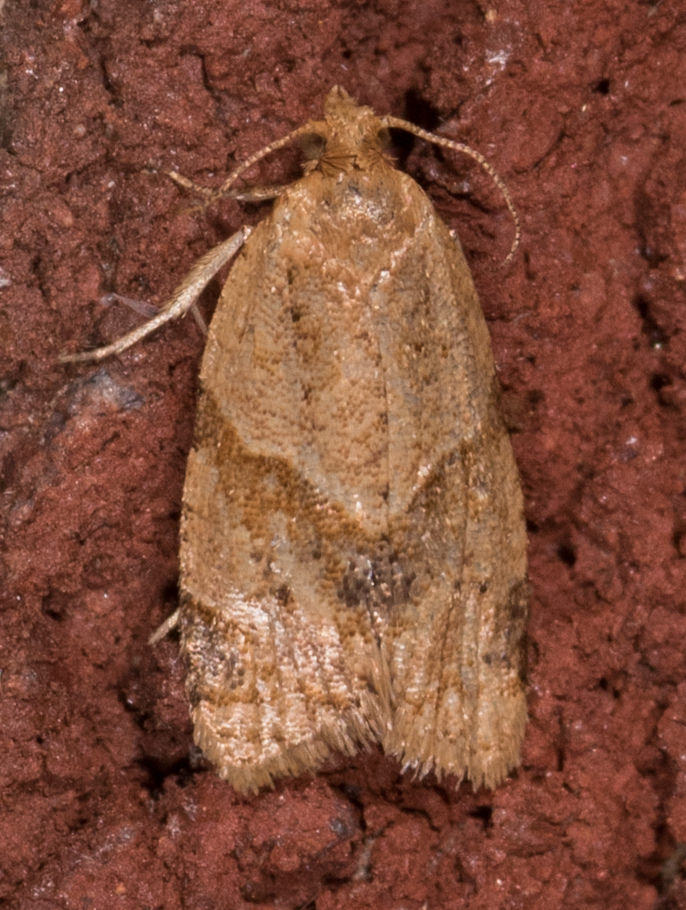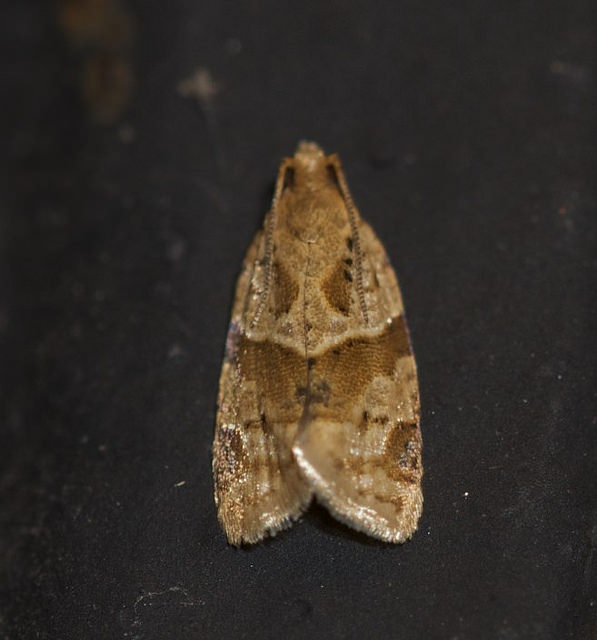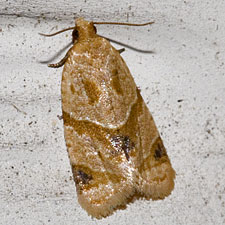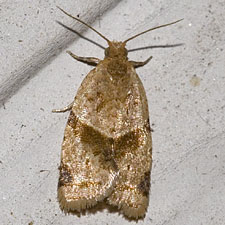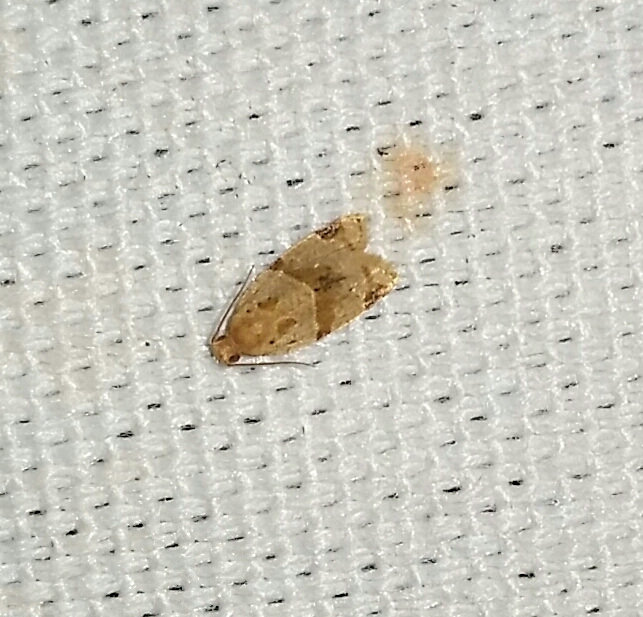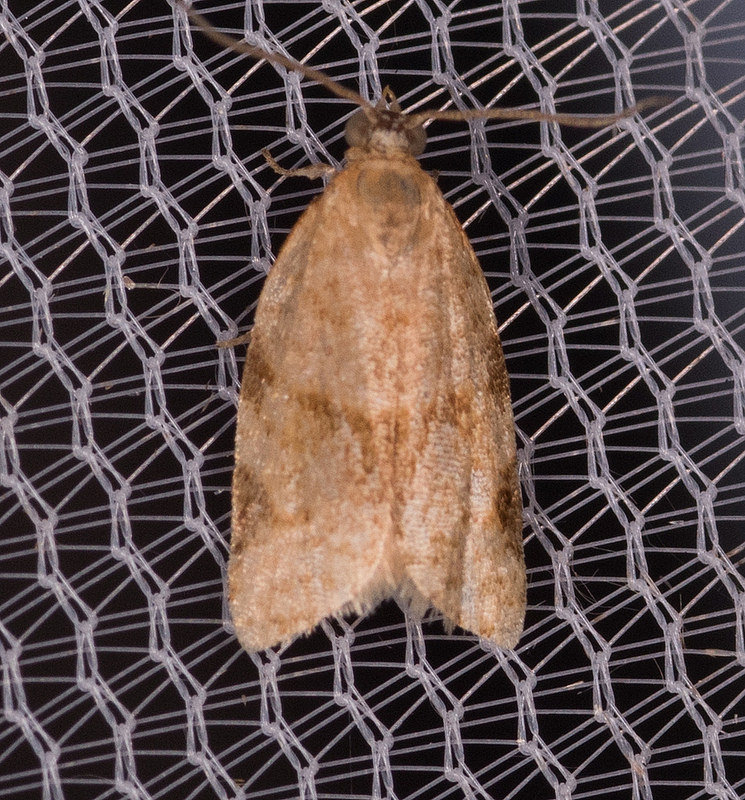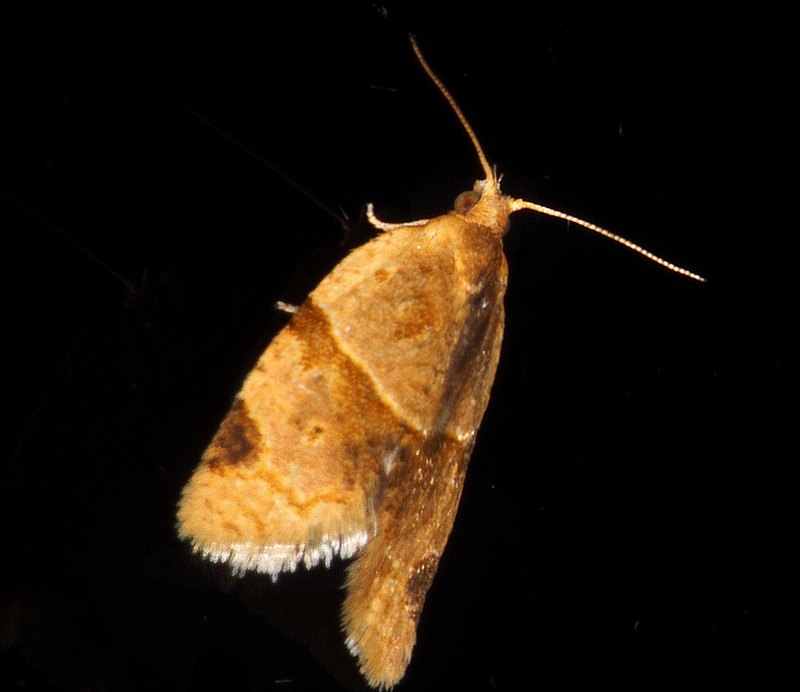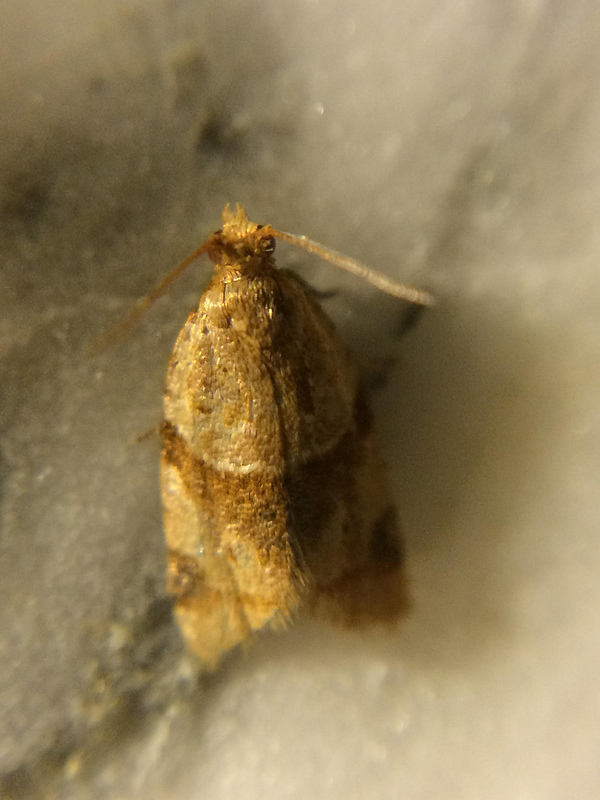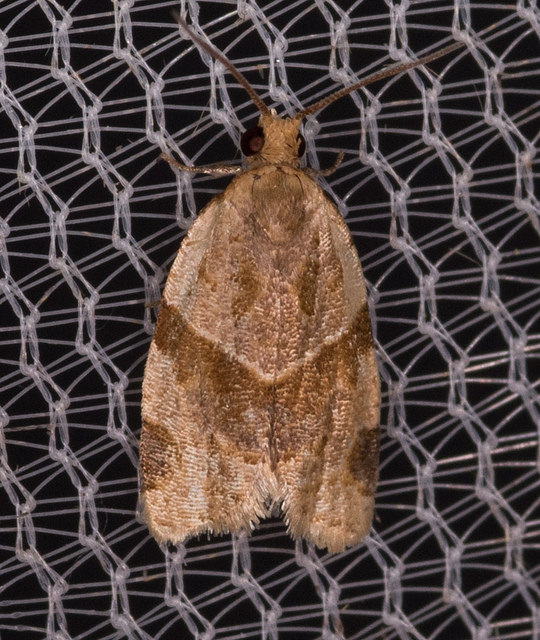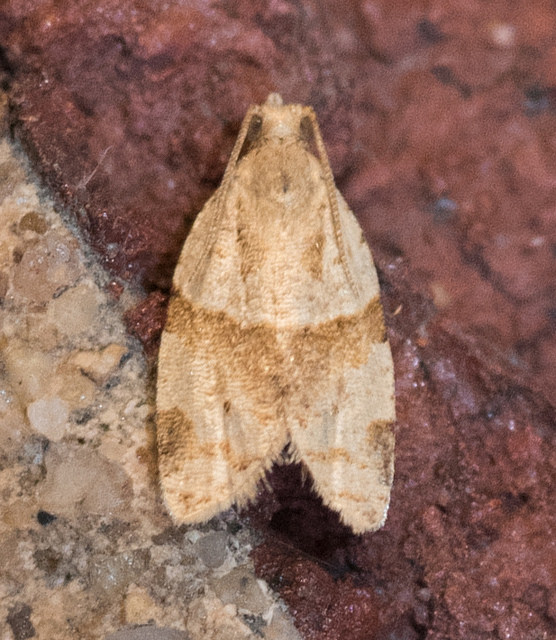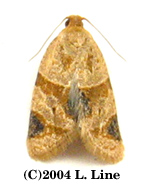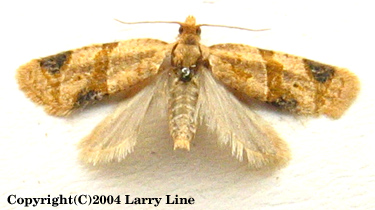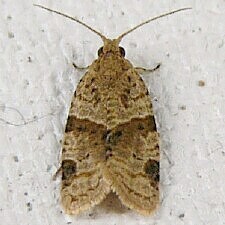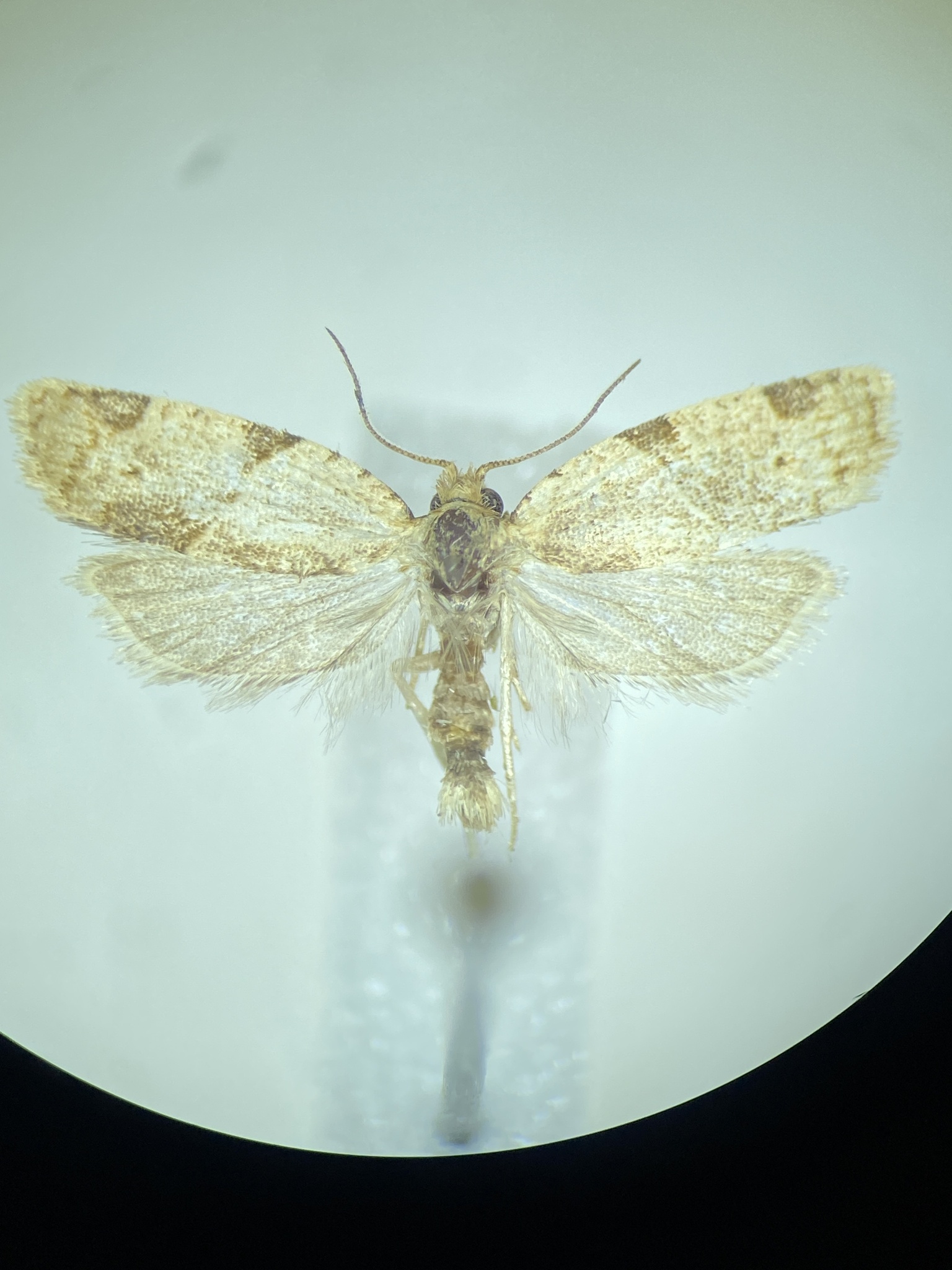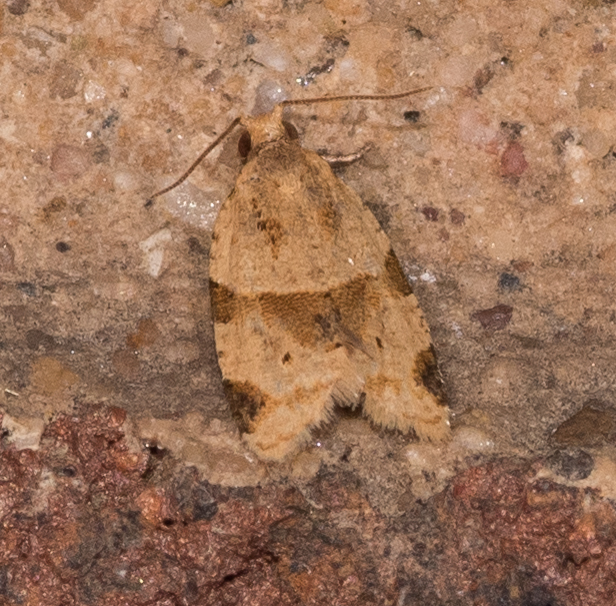Map Snapshot





















365 Records
Status
The most frequently encountered member of its genus, though "confirmation bias" may be a factor since some field guide show this species without similar species.
Description
Length around 5 mm. Viewed from above, note the broad brown "V" spanning both wings and semicircular subapical patches. Ruling out C. penetralis appears to require sub-millimeter precision measurements for probable species ID and DNA or female dissection for definitive species ID. Photos are generally best placed at Clepsis peritana/penetralis or Clepsis sp. See also similar Clepsis virescana.
Relationships
Larvae uses strawberries and other low plants.
Seasonality Snapshot
Source: Wikipedia
| Clepsis peritana | |
|---|---|

| |
| Scientific classification | |
| Domain: | Eukaryota |
| Kingdom: | Animalia |
| Phylum: | Arthropoda |
| Class: | Insecta |
| Order: | Lepidoptera |
| Family: | Tortricidae |
| Genus: | Clepsis |
| Species: | C. peritana
|
| Binomial name | |
| Clepsis peritana | |
| Synonyms | |
| |
Clepsis peritana, the garden tortrix or strawberry garden tortrix, is a species of moth of the family Tortricidae. It is found in Spain,[2] Cuba, as well as North America, where it has been recorded from southern Canada throughout the United States.
The wingspan is 10–15 mm for males and 12–15 mm for females. Adults have been recorded on wing from March to September, in several generations per year.
The larvae feed on Chrysanthemum, Cynara cardunculus, Senecio jacobaea, Stachys, Fragaria, Citrus, Scrophularia californica and Solanum torvum. Full-grown larvae reach a length of 13–14 mm. They have a light green abdomen, but the body colour can vary depending on the host plant. The head is yellowish brown.[3]
References
[edit]
